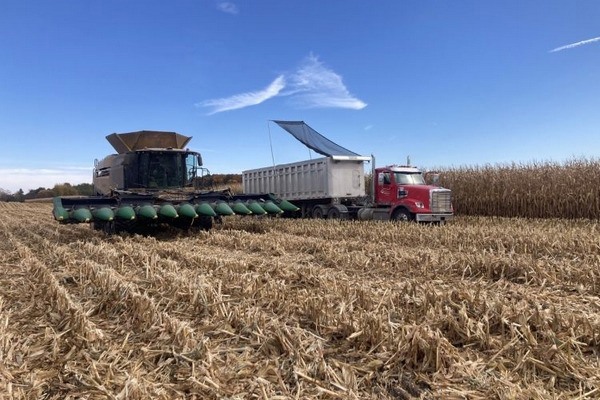It's important to keep good records of the different challenges and opportunities from each growing season. Records serve as a reference for future seasons and can help you learn from past mistakes (or wins), and adapt and respond to future challenges. This article provides an overview of findings in southwest Michigan. Overall, 2024 was punctuated by warmer-than-normal temperatures and earlier-than-normal crop stages and pests.

Potato
Potato planting began earlier than normal in mid-March. Temperatures were high early season, increasing the risk of seed piece decay following planting. Planting was slightly behind previous years until early May, at which point it was delayed for several weeks due to rainfall and low temperatures. Potato leafhopper and Colorado potato beetle both appeared in fields in mid-May. In some cases, this was before planting had finished on all potato acres. Colorado potato beetle was about two weeks earlier than normal.
Flowering began in late May for early planted acres, and aerial applications began the last week of May, right around row closure. Aphids were found in early July, which is a little earlier than normal. Potato growers throughout the whole state reported higher aphid pressures than normal this year, and southwest Michigan was no different. Vine kill on early harvested acres began in mid-July, and fresh crop chip harvest began in late July.

Colorado potato beetle egg mass, left, and aphids, right, on the underside of potato leaves. Photos by Nicolle Ritchie, MSU Extension, and Miguel Raya, crop scout, respectively.
Also in late July, late blight was confirmed by Rob Schafer of Mid-Michigan Agronomy in two different fields in St. Joseph County. The late blight was discovered in areas of the fields that received irrigation (over-application in one case) and poor fungicide coverage. In both cases, the disease was contained and appropriately decontaminated. Late blight is a highly contagious and destructive potato disease. Last year it was not discovered in St. Joseph County at all, and before that it was not found in commercial Michigan fields for a couple years. Late blight thrives in cool, moist conditions. Watch for it on lush canopies and field edges subject to prolonged leaf wetness.

Late blight is characterized by a dark brown to black water-soaked lesion. The underside of the leaf (shown right) may have silvery fuzzy sporulation when cool and moist. Photo by Nicolle Ritchie, MSU Extension.
Dry weather in September and October resulted in an earlier harvest than normal with several consecutive days of harvest. The high temperatures delayed harvest temporarily in some cases and increased bruise risk by drying out soils. However, a dry fall meant reduced disease risk for tubers going into storage. Overall, potato harvest finished up a little earlier than normal, and yields were reported to be good.
For more information:
Nicolle Ritchie
MSU
Tel: +1 269-858-8739
Email: [email protected]
www.canr.msu.edu
